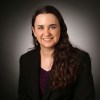CCSD teacher vacancy numbers not included in strategic plan
The Clark County School Board received a strategic plan update Thursday about teacher recruitment and a critical labor shortage but didn’t talk about vacancies for the upcoming school year that begins Aug. 7.
The topic appeared on the consent agenda — where trustees approved multiple items in one vote — without any presentation or any discussion.
During a public comment period, Vicki Kreidel — an elementary school reading teacher and president of the National Education Association of Southern Nevada — said there’s no indication the district is doing anything to correct some of its retention issues, and it will continue to lose educators at a faster rate than ever before.
“It used to be that any of us could be easily replaced,” she said. “That’s not the case anymore, is it?”
Online meeting materials don’t include the number of teacher vacancies, how many educators have left the district or how many were hired. And the most recent data included is from the school year that ended in May.
As of Friday, the district’s hiring website lists 1,266 openings for licensed employees — a job category that includes teachers, school counselors and nurses.
The Las Vegas Review-Journal requested a current number of teacher vacancies for the upcoming school year and the percentage of classrooms with a licensed teacher.
In a response Friday, the nation’s fifth-largest district — with more than 300,000 students — said: “Because we are still hiring for the upcoming school year, that data will not be available until after school begins.”
Jim Frazee, a high school teacher and vice president of the Clark County Education Association, told trustees there could be an estimated 35,000 students that don’t have a licensed educator in their classroom.
But after his comment, Board President Evelyn Garcia Morales said she wanted to caution the public that recruitment is ongoing and numbers are being thrown around about vacancies in the district.
It’s unfair to make broad statements that are not grounded in district facts and data, she said.
Earlier in the meeting, Trustee Linda Cavazos said she understands people are concerned about some of the consent agenda items that commenters spoke on.
She said she wants to assure people that the board and superintendent are working hard on those things.
Teacher recruitment statistics
Online meeting materials show 94 percent of classroom teacher positions were filled during the 2022-23 school year.
It’s unclear what time of the school year that statistic is based on. It’s higher than the 92 percent figure presented to trustees in October.
Materials include a comparison with the previous few years: 95.7 percent in 2021-22, 97.5 percent in 2020-21 and 95.4 percent in 2019-20.
Trustees also received information on how many teachers were recruited for a selection pool, meaning the “number of candidates in a ‘hiring’ status prior to final vetting of the candidate,” according to meeting materials.
It shows 4,815 teachers were in the selection pool last school year — up from 3,688 in 2021-22, 3,012 in 2020-21 and 2,005 in 2019-20.
There were 247 special education teaching assistant vacancies last school year, compared with 134 the previous year.
But the hiring situation improved for school bus drivers, who received a pay increase last year. There were 40 vacancies last school year compared with 240 the year before that.
The presentation notes challenges such as compensation, cost of living increases and a national teacher shortage following the COVID-19 pandemic.
The district said it has developed relationships with schools federally identified as Historically Black Colleges and Universities, and Hispanic-Serving Institutions in order to recruit teachers.
It also said it uses “candidate relation management software” for better efficiency and has reinstated in-person teacher recruiting trips.
The district boosted starting teacher pay last school year by more than $7,000 — to $50,115 — and has given employees retention bonuses.
Public comments
After working for the district for 25 years, Tampa said many of the problems today are the same as when she started.
Many political actions by the legislature make it extremely difficult for any superintendent and board to implement things for the greater good of the district and children, she said.
Tampa also said support professionals are human beings, not “servants to be commanded,” and administrators need to stop bullying, abusing their authority and being petty and vindictive.
Kelly Edgar, a 26-year teacher in the district, said one of the reasons many of her colleagues are leaving the district is the lack of student and parent accountability.
She also pointed to factors such as one-size-fits-all restorative justice and behavior plans, grade reform policies, aggressive student behavior, classroom disruptions and teacher pay issues.
Educators and students are suffering the consequences of decisions made by people who’ve never taught before and are completely out of touch with the reality of what it’s like to be a teacher, Edgar said.
“Please listen to those of us who are in the trenches doing the work,” she said.
Kreidel said fixing the reasons educators are leaving the district should be the top priority and if not, the shortage will become a crisis that ends up closing some schools.
“It does little good to invest in recruiting,” she said, “when we know many of these educators will not stay.”
Contact Julie Wootton-Greener at jgreener@reviewjournal.com or 702-387-2921. Follow @julieswootton on Twitter.
























